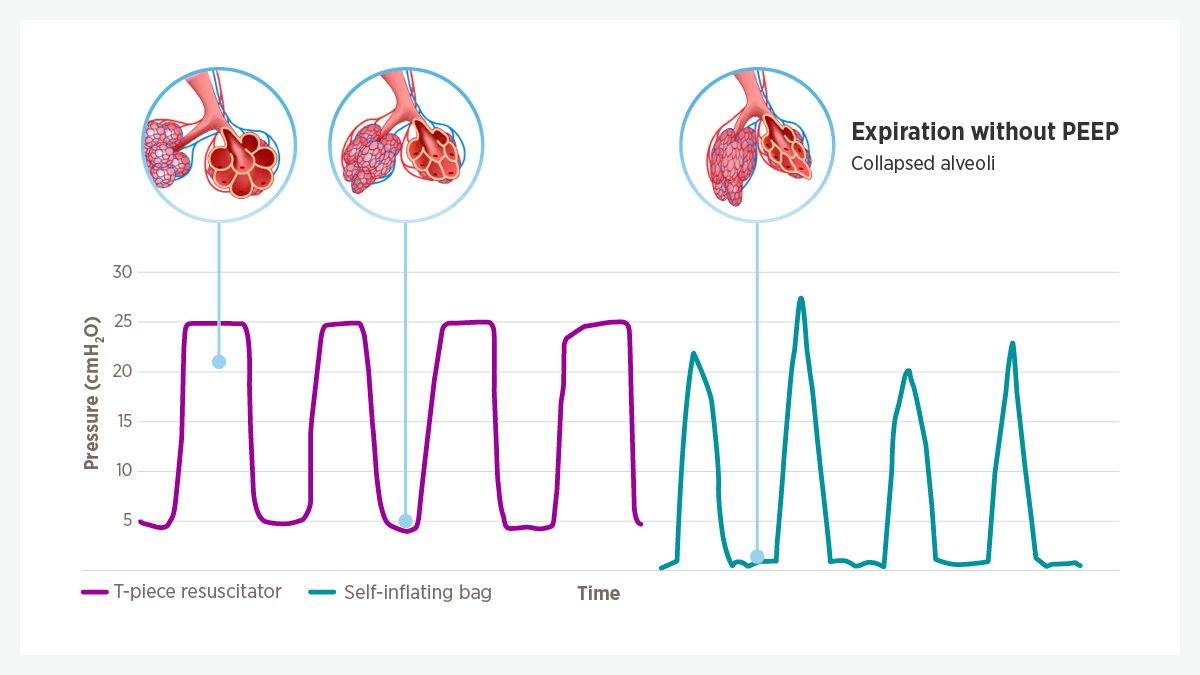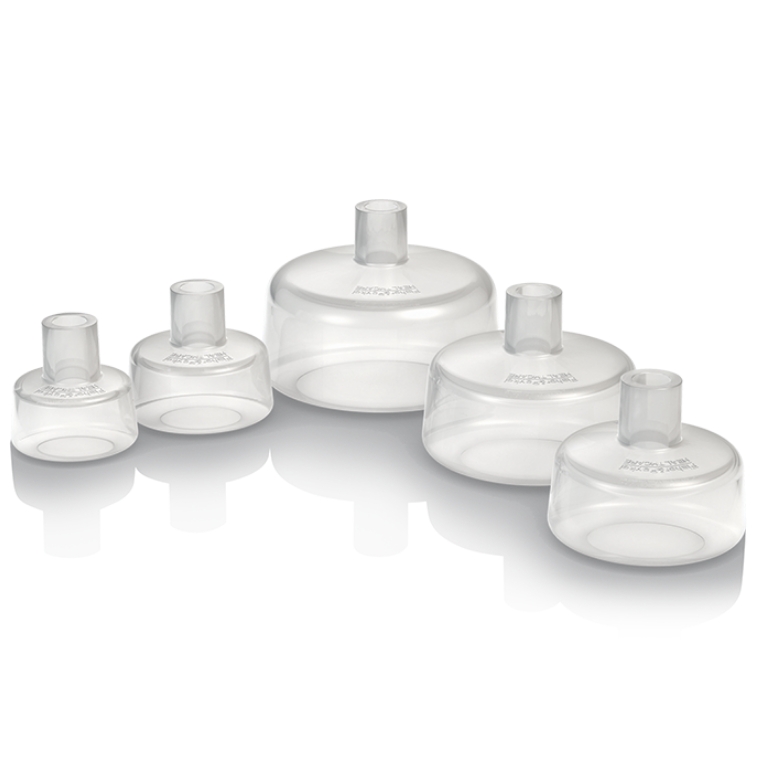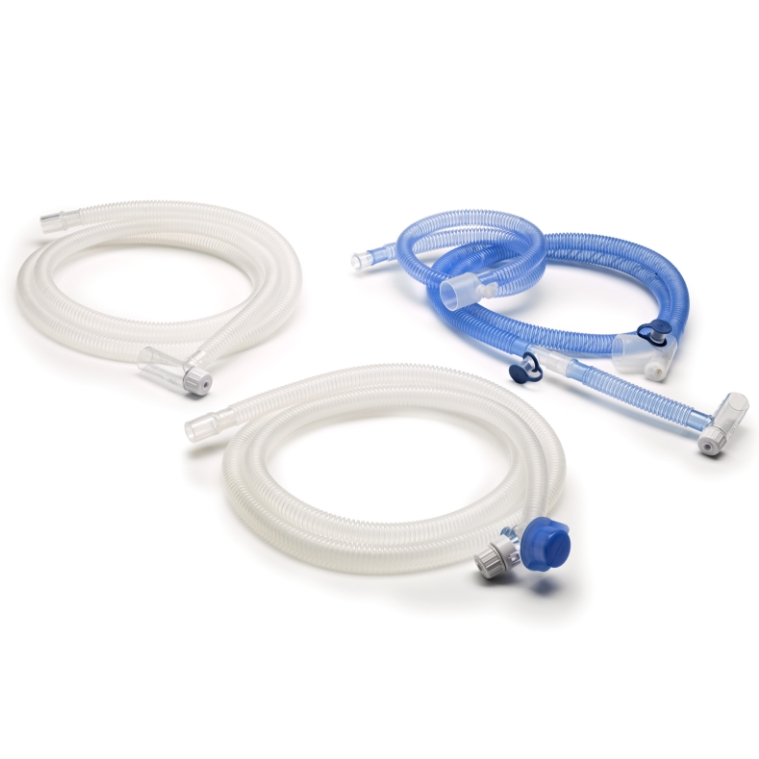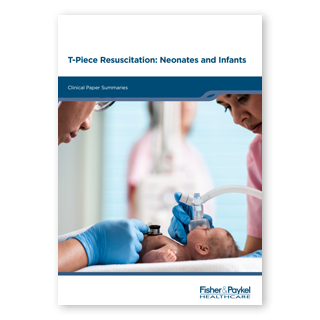Delivers controlled, consistent and precise pressures to infants (up to 10 kg) - independent of operator experience.
View Neopuff
Available in five sizes and designed to be soft and pliable, with a transparent surface that allows breath condensate to be observed.
T-piece resuscitation circuits
Connects to a mask or endotracheal tube and allows positive end-expiratory pressure to be adjusted via the PEEP valve.
How does T-piece resuscitation work?
The T-piece connects to a face mask or other interface to deliver a flow-regulated, pressure-limited gas supply to the infant, enabling the application of controlled initial inflation breaths.
Consistent and controlled PIP and PEEP delivery help to protect the lungs from injury and establish and maintain functional residual capacity (FRC). FRC is the volume of air that remains in the lungs following a typical expiratory phase. This volume is important for keeping the lungs open post exhalation and for ensuring adequate pulmonary gas exchange.1
Compared with other types of resuscitators, such as self-inflating bags and flow-inflating bags, T-piece resuscitators provide consistent and controlled pressures independent of operator experience.2,3
The International Liaison Committee on Resuscitation's (ILCOR) international resuscitation guidelines recommend the use of a T-piece resuscitator when a gas source is available.4-6
Helps protect the lungs from injury
T-piece resuscitators have been designed to provide consistent and controlled PIP during resuscitation.
PIP is the maximum inspiratory pressure required to improve oxygenation without causing adverse effects. Delivering a controlled PIP is important as uncontrolled PIP that is too high may lead to lung injury, while under-inflating the lungs may not provide adequate gas exchange.
Animal studies have demonstrated that lung injury can occur during resuscitation with just a few large manual inflations.7

Fig 1. PEEP: peak end-expiratory pressure.
* Pressure measurements taken from a resuscitation simulator while a self-inflating bag and F&P Healthcare Neopuff were being used by a qualified resuscitator.
F&P and Neopuff are trademarks of Fisher & Paykel Healthcare Limited. For patent information, see www.fphcare.com/ip



